While we spent much of our time in cities, we did have a chance to drive through some of the countryside and visit a school and village.
|
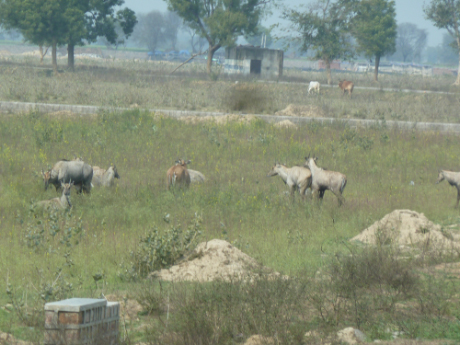 |
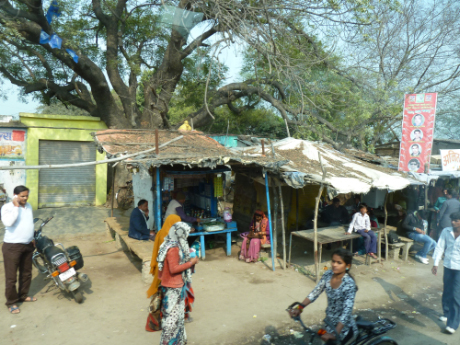 |
Farming remains the major form of sustenance for most Indians. In some areas the soil is good but where it is not there are always livestock (cattle, goats, sheep) grazing.
|
We passed through dozens of small villages, usually a small collection of shops and houses and lots of hard-working people. |
 |
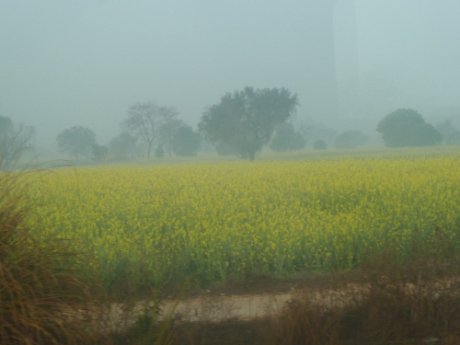 |
| We saw mostly women working in the fields. That was not unexpected, since it was not planting or harvest time and tending growing crops is usually a woman's job. |
We passed hundreds of acres of mustard growing; it is a major crop in India, grown for the oil. Unfortunately it is a major invasive weed in California and infests the River Park where Pat volunteers. Every time we passed a field Pat wanted to jump out and start pulling it out. She refrained.
|
 |
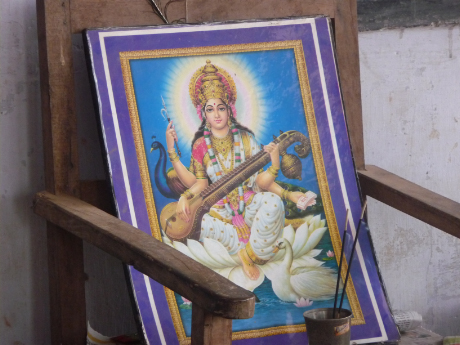 |
| We visited a village school, which met in a very simple building but was full of students. |
Every classroom has a picture of a Hindu god of education prominently displayed to inspire the students.
|
 |
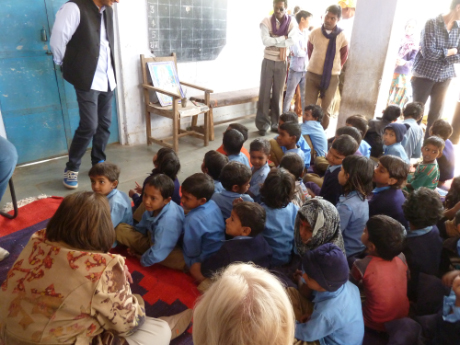 |
The furnishings were simple, to put it mildly: no chairs or desks and only a small blackboard. The children were quite happy to sit on the floor and we willingly got down with them. Even though this is a poor rural school, the students are expected to wear uniforms and are very well-behaved (at least while we were there). One boy got a little loud but one look from the teacher quelled him.
|
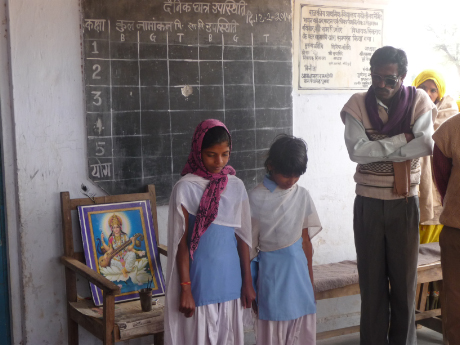 |
 |
| Some students were invited to recite their lessons for us. They would lead and the class would repeat it back. |
There was a fairly wide range of ages among the students; public education is guaranteed, but not required, through about eighth grade.
|
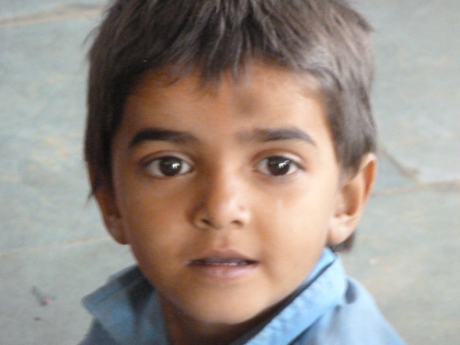 |
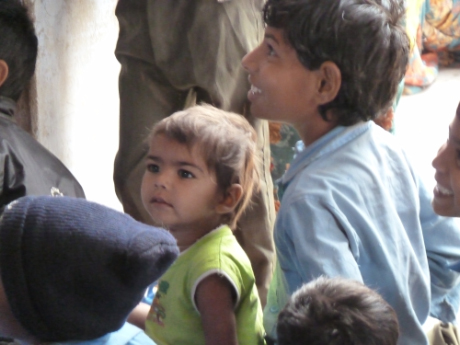 |
Some of the students seemed amazed to see us.
|
No babysitter? Bring your little sister to class. |
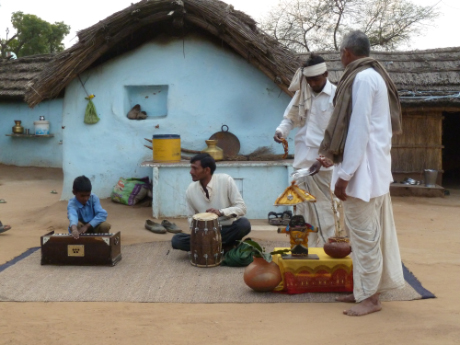 |
 |
| After the school we went to the village where some of the students live. We were greeted with a traditional Hindu ceremonial greeting. |
Leis were very popular; we received them at most of the hotels, statues were often draped with them, and this little one had one to wear for the occasion of our visit.
|
 |
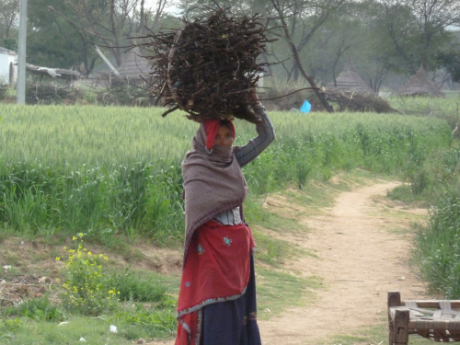 |
| The ceremony was conducted by the men; the women gathered in front of another house to watch us. |
After the ceremony the villagers went back to work and we were invited to wander around. Naturally one of the major tasks was collecting firewood.
|
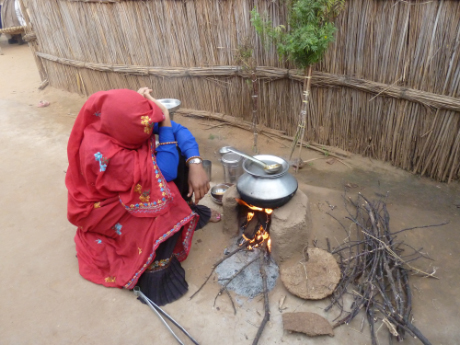 |
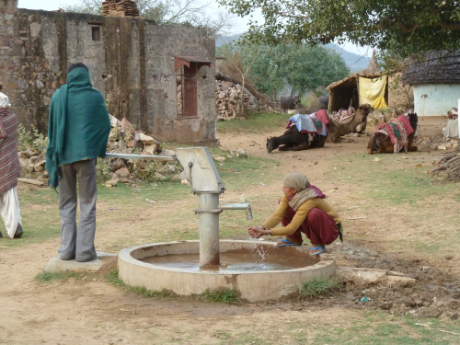 |
| It was time to start cooking dinner. Cooking is done on an open stove built out of clay. |
Fortunately the women do not have to walk a long way for water; the government has built a well in their village.
|
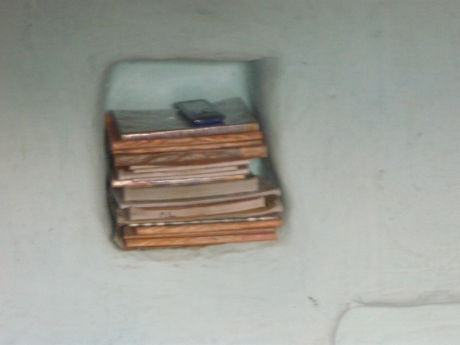 |
 |
| Education is a priority. This small home had a stack of books on a shelf, topped by the ever-present cell phone. |
One family's prized possession. Very slowly, modernization is coming. |






















